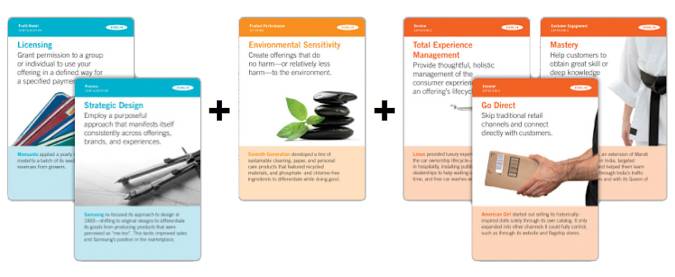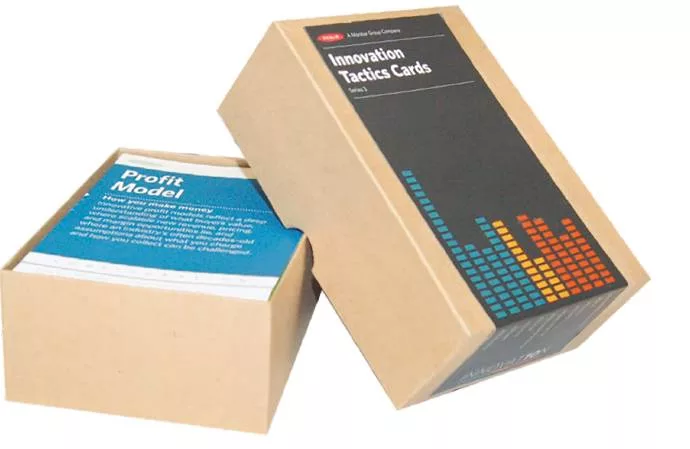The most pervasive misconception about innovation is that it is essentially synonymous with creativity. People almost universally believe that innovation comes from geniuses, gadflies, mavericks, rocket scientists, and agency types fueled on illicit substances. This belief is profoundly and dangerously wrong. Learning to see modern innovation more clearly can help firms of any size innovate more effectively – building bold breakthroughs more reliably. Any conscious company trying to have more impact with scarce resources should make it a priority to master these revolutionary methods.
Consider one simple example: as a startup business, you might want to create an app and have it manage sales, plus some zippy new sophisticated services. Back in the old days – about four years ago – you would have had to build such a capability with a secure back office, costing perhaps $4 to $5 million, before you received your first dollar of revenues. By contrast, today, fully 70 percent of all US startup firms begin life inside the Amazon Elastic Compute Cloud, where you can simply select the functionality you need, then pay for the services by the hour. Your initial costs may run less than a dollar per hour, and those costs scale as your business does. In this cloud world, you can prototype and iterate your startup perhaps seven times before you spend as much as you used to have to spend to get to your version 1.0.
These new tools and tactics are among hundreds that we track and teach at places like Kellogg Graduate School of Management or the Institute of Design in Chicago. Collectively, we call this revolution “lightweight innovation.” When you know about this new approach, and when you use these tools with discipline and dexterity, there are far fewer obstacles between your bold goals and effective execution of a newsworthy breakthrough business or service.
WHAT DOES EFFECTIVE INNOVATION ACTUALLY LOOK LIKE?
Over the past thirty years, a small but dedicated group of scientists have worked diligently to learn what makes innovation succeed instead of fail. Their discoveries have been remarkable. Put simply, there is a huge and growing gap in the innovation results that pros get compared to average Joes (and Josephines). So, if you are new to the topic, start here…
CLEAR DEFINITIONS:
Innovation is the creation of a new viable market offering. Each of these words matters, especially “viable.” An innovation need not be truly new and they rarely are; they are just new in your market space. Note that “innovation” is a noun – it’s what you’re cooking up.
Innovating requires identifying complicated problems that matter, then moving through them to deliver elegant solutions. Research shows that more than 95 percent of the time, teams focus on the wrong problem when they try to innovate, so this helps capture the process side of innovation. Note that “innovating” is a verb – it describes what you have to do to innovate successfully.
PERVASIVE MYTHS:
1. You should focus on a product. This is the single dumbest thing to try, but it is a nearly universal assumption. In the unlikely event you succeed, it will be swiftly copied, since it is always easier to have an idea second. Focus on platforms instead.
2. The most important thing is creativity. This is simply wrong. Most people and nearly all firms have too many ideas. The key to effective innovation is discipline.
3. Generate many ideas. This always leads to challenges in evaluating the ideas afterwards, and most firms do that very badly. Great innovators focus on a smaller number of bigger ideas.
4. New technology is always key. Surprisingly, this is very rarely true. Modern innovation is much more about the elegant integration of many well-known things rather than the primary invention of new things. The best innovations balance the offering with the business model and a great experience.
THE NEW SCIENCE OF INNOVATION
Over the past couple of decades, innovation has been giving up its secrets. The best scientists of innovation always study which innovation efforts return the cost of capital for the developing team – call this a “hit.” Innovation scientists have learned many things that move the “hit rate” up from a global average of less than five percent to rates that are routinely above 35 percent and can range up to nearly 80 percent – prima facie evidence that there is now a science where before there were mainly only lucky strikes. Here are the keys to this emerging science:
1. Make discoveries. You really have no right to innovate unless and until you know some stuff that others don’t. So use social scientists, mine big data, and study users. Focus on what wastes their time, annoys them, or simply prevents them from using a category because they don’t feel they can.
2. Use protocols, not brainstorming. The cruelest thing we do to smart people is to stick them in a room and say, “Okay, innovate now!” What we’ve discovered is that it is simply harder than that – like major surgery or flying an airplane. So, give people step-by-step tools so they know what to do.
3. Inside an organization, make it obligatory, not optional. The ideal way to do this is to incentivize senior executives to sponsor innovation, and use high-potential young leaders to author innovations.
LEADING INNOVATION NOW
During any time of intense change, innovation is a vital leadership imperative. Simply put, if you are not changing boldly and swiftly enough now, you are very likely falling behind. If you are innovating boldly, you can get your unfair share of attention – attracting partners, talent, and investors all in disproportion to your size. This is how you punch way above your weight. If you wish to master this newer, 21st century bold and lightweight innovation:
• Author the boldest possible concepts – the ones that can change the world.
• Then execute with lightweight tools and methods – using crowds, clouds, partners, and prizes, and by building your plans in the most elementary, modular ways.
When you do it right, it will be the hardest work you ever loved.

Larry Keeley has worked for over three decades to develop more effective innovation methods. He has been identified by BusinessWeek as one of seven leading global innovation gurus, and separately as one of 27 leading global designers. He teaches innovation at both IIT’s Institute of Design, where he is also a Board Member, and at the Kellogg Graduate School of Management, where he has been recently appointed as a Senior Fellow.
One new way to treat innovation is as a series of modular, smart tactics that act like Lego™ building bricks – so that innovation becomes less about brilliant invention and instead a simpler exercise of construction. Developed at Doblin in work led by my colleague Ryan Pikkel, the entire universe of innovation tactics presently numbers just 115 simple ideas – yet these are entirely enough to build literally any of the most valuable 4,000+ innovations currently active in the world.
For example, these five tactics show what Tesla has done to make itself the cool kids’ car:





